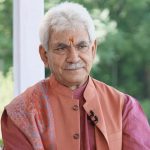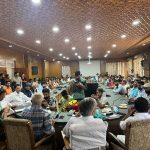New Delhi, Sep 19: “Parliament’s Central Hall was witness to India’s march from pre to post independence and whenever I crossed through it, which I did very often because that was a short route between Lok Sabha and Rajya Sabha, I always consciously looked at the plaque carrying the inscription which mentioned that the Constituent Assembly of India sat in this hall from December 1946 to January 1950 to frame the Constitution of India. Looking at this plate, each time, gave me a feeling of a brush with history,” said Union Minister of State Dr Jitendra Singh on Tuesday.
Speaking to the media at the entrance of the new parliament building, Dr Jitendra reminisced about the time spent in the old parliament house. “It is not only the personal bond that we MPs shared amongst ourselves, but even the bricks and walls of that building had stories and anecdotes to tell right from British times, down to the tenures of India’s 15 Prime Ministers after independence,” he said. “It witnessed the sittings of the Imperial Central Assembly during British Rule, the Constituent Assembly sittings also took place in the Central Hall of Parliament and after independence in 1947, the old parliament emerged as the hub of the highest seat of democracy.”
Dr Singh said all MPs not only share emotional relationship with the old parliament, but also there is a special bonding with its precincts. The old parliament building will remain immortal for all times to come, he said.
He hailed the proposal by Prime Minister Narendra Modi to name the old Parliament House as “Samvidhan Sadan”, saying, “It was very thoughtful of PM Modi.”
About shifting to the new parliament building, the union minister said it was a momentous occasion for the present Members of Parliament of the 17th Lok Sabha as we are blessed with the privilege to serve a part of our term from the old parliament building and from today the latter part of the term in the new Parliament building. This day marks a turning point in the history of India’s parliamentary democracy, he said.








